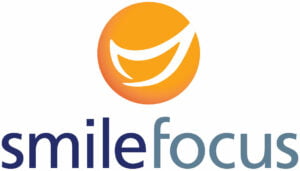- Sponsored Content

Orthodontic treatment isn’t just about creating a perfect grin. It’s also about creating a functional “bite” that contributes to good tooth alignment, healthy jaw positions and a beautiful natural smile. If the teeth are lined up correctly, they are able to function at their best and facilitate better oral health and tooth brushing measures. We also know that good oral health is a keystone contributing factor to your overall wellbeing. An attractive, healthy smile can boost self-confidence, especially as it’s one of the first important things that people notice.
The right time
Dr Thushala Ubaya at Smile Focus in Singapore has over 20erbie years of experience in dentistry and orthodontics. She is often asked, “At what age should my child get an assessment for braces?” or “Does my child need braces?”
As every child grows and develops, a common consideration for parents and children is whether orthodontic treatment is needed to help patients achieve a winning smile and good oral function. But when is the right time for orthodontics?
An orthodontic assessment and orthodontic treatment can be done at any age once sufficient adult teeth start appearing in the mouth. The ideal time would be when all the baby teeth have been lost, and the permanent adult teeth have grown into the mouth, usually around 11-12 years old. However, some children lose their baby teeth sooner, and early assessment can be beneficial, especially if they’re developing jaw problems or if the upper front teeth really stick out.
Early evaluation
The American Association of Orthodontists recommends that children have their first orthodontic exam by age seven because adult teeth start to form between 6-12 years of age.
Early evaluation provides timely detection of problems and a greater opportunity for effective treatment to ameliorate a developing problem and reduce its severity or eliminate it entirely from the child’s mouth. Well-timed intervention guides jaw growth and tooth development, preventing serious problems later. When orthodontic intervention is not necessary, the patient can still be carefully monitored on their jaw and facial growth and dental development to begin orthodontic treatment when they’re ready.
So, you might be wondering what dental danger zones you need to look out for? Dr Ubaya has outlined some of the most common below.
Danger Zone: Underbite
The lower front teeth cover the upper front teeth in a reverse bite. This may be the result of a jaw growth discrepancy and/or tooth problems.
The cause: This can occur due to jaw positioning. Also, crooked teeth leading to an abnormal bite and protruding lower jaw movement.
The cure: Orthodontic treatment with fixed braces or removable plastic plates can correct the crossbite of the teeth and allow the jaws to bite in a better position.
Danger Zone: “Buck Teeth”
Protruding upper front teeth are vulnerable to getting knocked or injured during sports and play activities.
The cause: Backward lower jaw, thumb or finger sucking, very crooked upper front teeth that then protrude outwards.
The cure: Orthodontic treatment with functional appliances to guide the growth of the lower jaw and allow the upper front teeth to tuck in. This is often in conjunction with fixed braces or aligners to straighten the teeth and fully correct the bite.
Danger Zone: Spacing
Teeth are too small, jaws are too large, or there are missing teeth leading to space between teeth.
The cause: Usually genetics.Missing or small teeth tends to run in families.
The cure: Orthodontic treatment with fixed braces or aligners to straighten teeth and close spaces. Sometimes replacement teeth can be put into the spaces to replace a missing tooth if needed, such as an implant or a bridge.
Danger Zone: Crowding
Insufficient space for the teeth along with jaws leading to crooked teeth or teeth stuck in the jaws.
The cause: Genetics again! Jaw size and positioning can commonly be inherited through families, though it can be slightly different in every child.
The cure: Orthodontic treatment with fixed braces or aligners will definitively cure crooked teeth.
Danger Zone: Deep Overbite
The upper teeth cover the lower teeth significantly, giving the appearance of an “overclosed” look.
The cause: A typical jaw positioning leading to the front teeth biting past one another, most commonly when the lower jaw is set back.
The cure: Removable orthodontic braces in conjunction with fixed braces to normalise a deep bite and produce a normal, good anterior bite.

Dr Thushala has over 20 years’ experience in dentistry and orthodontics. She has spent her professional career in the United Kingdom, including working in senior positions in the NHS, where she was the lead consultant Orthodontist and in private practice as a specialist Orthodontist in London.

https://smilefocus.com.sg/
@smilefocus_sg
@Smilefocus
6733 9882
enquiry@smilefocus.com.sg








